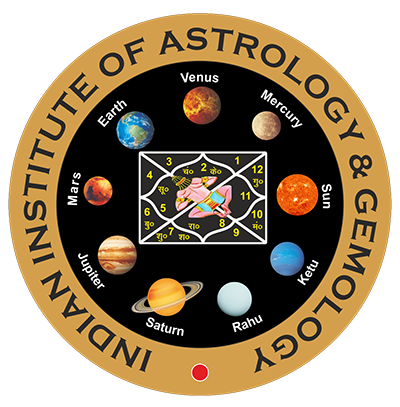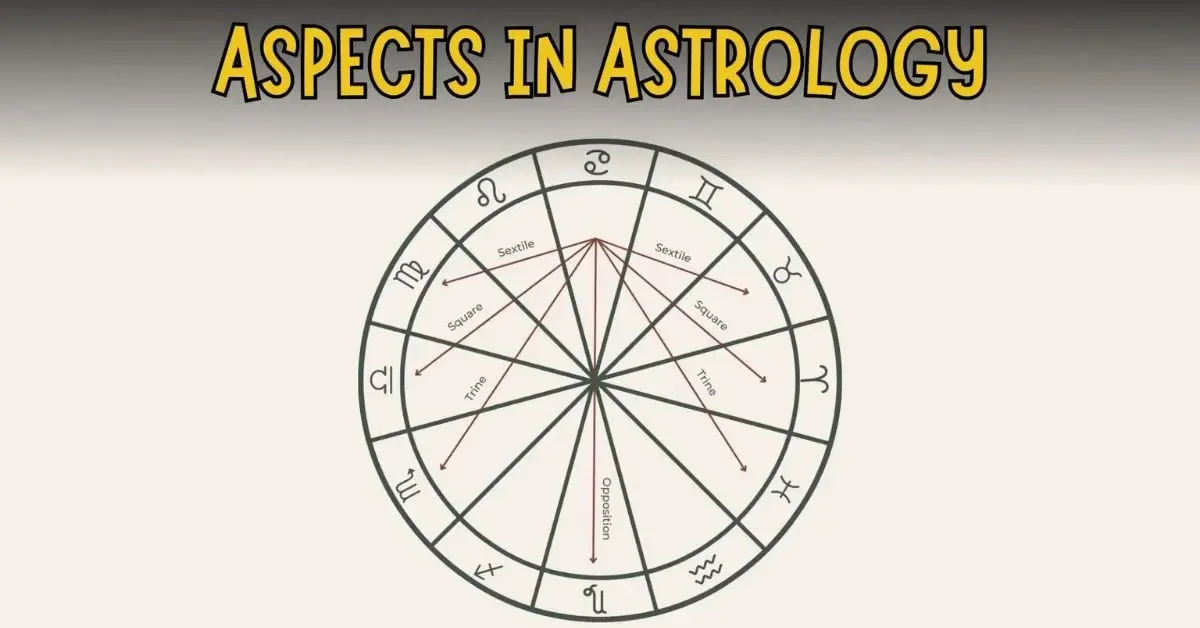




1854 Views | November 08, 2024
Astrological aspects in astrology present the essential elements needed to decode the active cosmic energies guiding your life. Celestial forces interact through strong planetary positions that shape multiple areas of your life, including your personality development, relationships, career path, and life experiences. Planetary alignment patterns in astrology include harmonious trines, challenging squares, and forceful conjunctions, which together present meaningful views on personal growth and underlying strengths.
Through reading the cosmic patterns and aspects, you build expanded insight into your life destiny and master life transitions better through precise direction.

Birth charts display planetary relationships through aspects which create particular angles between celestial bodies measuring by degrees. Planetary angles demonstrate the active relationship between celestial bodies by showing both peaceful and stressful interactions. Every angle within the cosmos describes its distinct interactive pattern through which celestial bodies exchange their respective energy sources.
A harmonious planetary relationship allows effortless expression of related character traits yet challenging interactions prompt both development and difficulty. Predictive astrology alongside natal chart analysis and planetary energy interpretation rely fundamentally on the correct interpretation of aspects.
Astrology classifies aspects into two main categories: major aspects and minor aspects. Major aspects receive standard examination yet minor aspects deliver detailed breakdowns of characteristics within astrological studies.
These are the foundational aspects in astrology and include:
Planetary conjunction occurs when two planets maintain equal positions regarding degrees. The planetary alignment between these positions enhances their combined energies thus creating shared qualities that emerge. When planets align in this position it generates a major theme that stands out in the entire chart. Strong communication abilities and intelligent attributes are birth signs of Sun and Mercury in conjunction.
Planets 60 degrees angle from one another create a sextile aspect that produces harmonious connections between them. The arrangement inspires cooperation as well as innovative thought and new prospects. A Moon-Venus sextile position in a natal chart reveals emotional balance together with artistic aptitude.
Planets which exist at 90-degree angles from each other align to form a square aspect symbolizing both tension and challenges. The friction produced by these planetary positions builds resilience and drives continued growth. A Mars-Saturn square describes both difficulties maintaining discipline together with remarkable stamina levels.
A trine exists when planets maintain a 120-degree aspect which produces harmonious energy in our lives. Nature gives certain abilities through such aspects while life takes a smooth route through them. A Jupiter-Sun trine aspect represents fortunate circumstances which bring together strong positive emotions along with energetic life force.
Planetary bodies which stand 180 degrees distant from one another form Oppositions, an important aspects in astrology, indicating dual aspects of power and symmetry. These astrological celestial arrangements both introduce friction and provide potential opportunities to merge opposing sides together while making compromises. The emotional challenges marked by a Moon-Saturn opposition show because it could lead individuals toward intellectual growth and wisdom.
The less significant planetary configurations help produce a deeper understanding of a chart analysis. Some common minor aspects include:
When planets form a quincunx pattern they require people to bring unrelated energies into alignment for proper reconciliation. This alignment suggests simultaneous mismatch and future potential adaptation to manage the misalignment.
This delicate aspect reveals minor challenges but also future options that create opportunities to make better decisions.
The sesquiquadrate represents subtle ongoing stress which conceals itself until its effects become noticeable.
Quintiles represent creative abilities as well as innovative thinking and talented performance. These natal placements reveal distinctive abilities or talents.
The astrological meaning of standard planetary relationships emerges based on planetary combination as well as sign placement alongside broader interplanetary aspects. Here are a few key considerations:
The interpretations of planetary aspects become clear through their essential planetary elements. For instance:
2. In astrology when Venus and Jupiter form a harmonious trine aspect there is benefit regarding both relationships and artistic endeavors.
The zodiac signs and houses which contain planets produce supplemental interpretations in astrological readings. When the Moon in Aries forms a square with Saturn in Capricorn you could experience difficulties combining emotional impulsive behavior with disciplinary responsibility.
Analyzing the orb helps determine how precisely two celestial bodies align. Planetary influences become stronger when planetary orbs are tighter and degrees closer to each other. Major aspects operate within a broad orb range of 6–10 degrees yet minor aspects need much narrower orbs (1–2 degrees) to produce meaningful results.
Astrology does not recognize aspects based on being either bad or good. Both harmonious and challenging aspects have unique roles in shaping our experiences:
Trines alongside sextiles build cardiovascular wellness while delivering effortless life opportunities along with natural talents. A passive approach to these aspects results in complacency between individuals.
Squares alongside oppositions generate tension which drives personal expansion and enhances a person's durability. These aspects of a birth chart identify specific locations for putting in sustained effort which ultimately causes deep alterations.
When multiple aspects form specific geometric patterns in a birth chart, they create "aspect patterns" with unique meanings:
A T-square occurs when two opposing planets create squares around another planet. The aspect pattern generates both pushing forces and substantial growth possibilities. The focal planet which creates the square assumes primary importance in resolving the underlying conflict.
A triangle of trines between three planets in the chart produces a Grand Trine which reveals natural talent along with harmonious balance. When coupled with active effort this combination brings positive advantages yet potential inactivity emerges if left unaddressed.
A Yod as an astrological structure exists when two planets maintain a sextile aspect while each forms a quincunx with a different planet. Such an uncommon celestial formation shows a path to a special life calling that often demands profound personal readjustment.
When multiple planets stay within close proximity while occupying either the same zodiac sign or house one after another this becomes known as a stellium although it does not qualify as an aspect pattern. The concentrated energetic pattern produces a central theme throughout the chart.
Astrological aspects exist as factual components which produce significant real-world results. Here’s how you can use aspects in your life:
Studying aspects from your birth chart will reveal important insights about your life purpose together with your natural strengths and obstacles you may face.
The Synastry relationship astrology system uses planetary chart alignments between partners to identify how they complement each other along with their relationship issues and potential development areas.
Predictive astrology uses transiting planet-to-natal planet aspects which expose important times for personal growth together with challenges and development opportunities.
Some astrological aspects create indicators which highlight professional aptitudes. When Mercury forms a trine with Uranus people tend to succeed in technological fields along with innovative areas.
The planetary energies in an astrological chart receive unity through aspects in astrology, which form the overarching astrological story. Through aspects, we discover more profound knowledge, helping us better understand our personal characteristics alongside our connection with others and our life trajectory. Every aspect in an astrological chart includes the power to guide us toward our maximum potential, whether they form harmonious or challenging connections.
Throughout life astrology provides students with an ongoing educational pursuit that can yield abundant rewards through aspect analysis. The study of patterns above reveals how cosmic activity mirrors the specific tale that is your life. Your chart's aspects should be accepted because they reveal your ultimate cosmic plan.